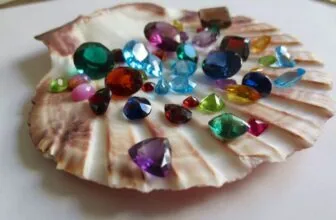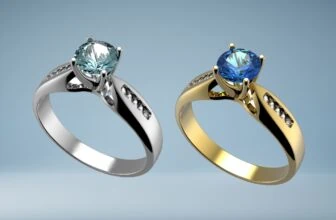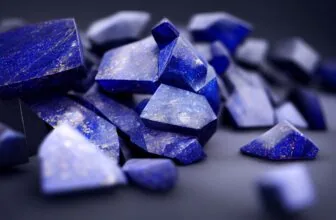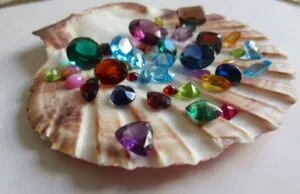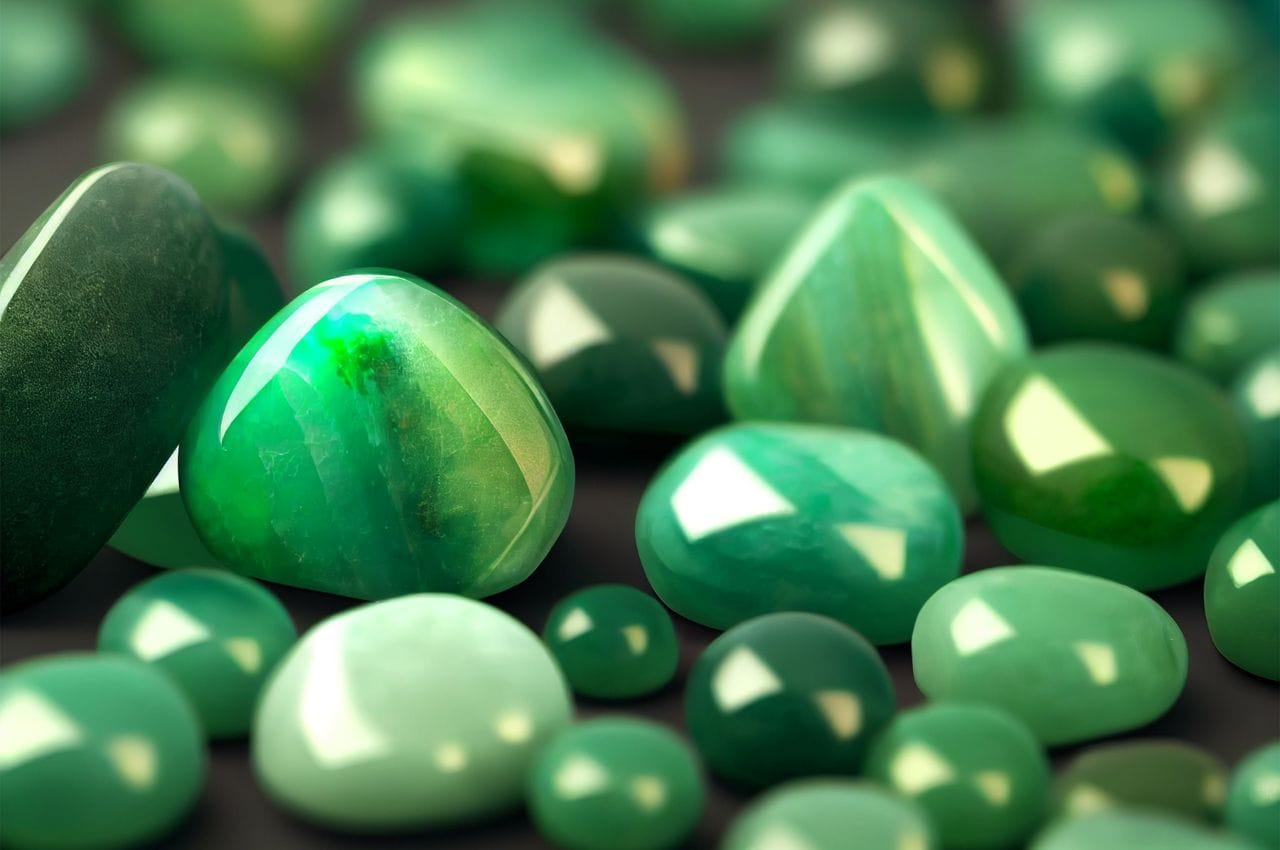
Table of Contents
Jade is a very unique and distinct looking gemstone that’s been prized since ancient times. Because it’s a stone that’s in so much demand, there are pitfalls to avoid when purchasing your own. If you’re looking to add a piece of jade to your gemstone collection, we’ve got you covered.
Here’s everything you need to know about jade including how to evaluate its quality, its use in jewelry, and how to take care of it.
What is Jade?
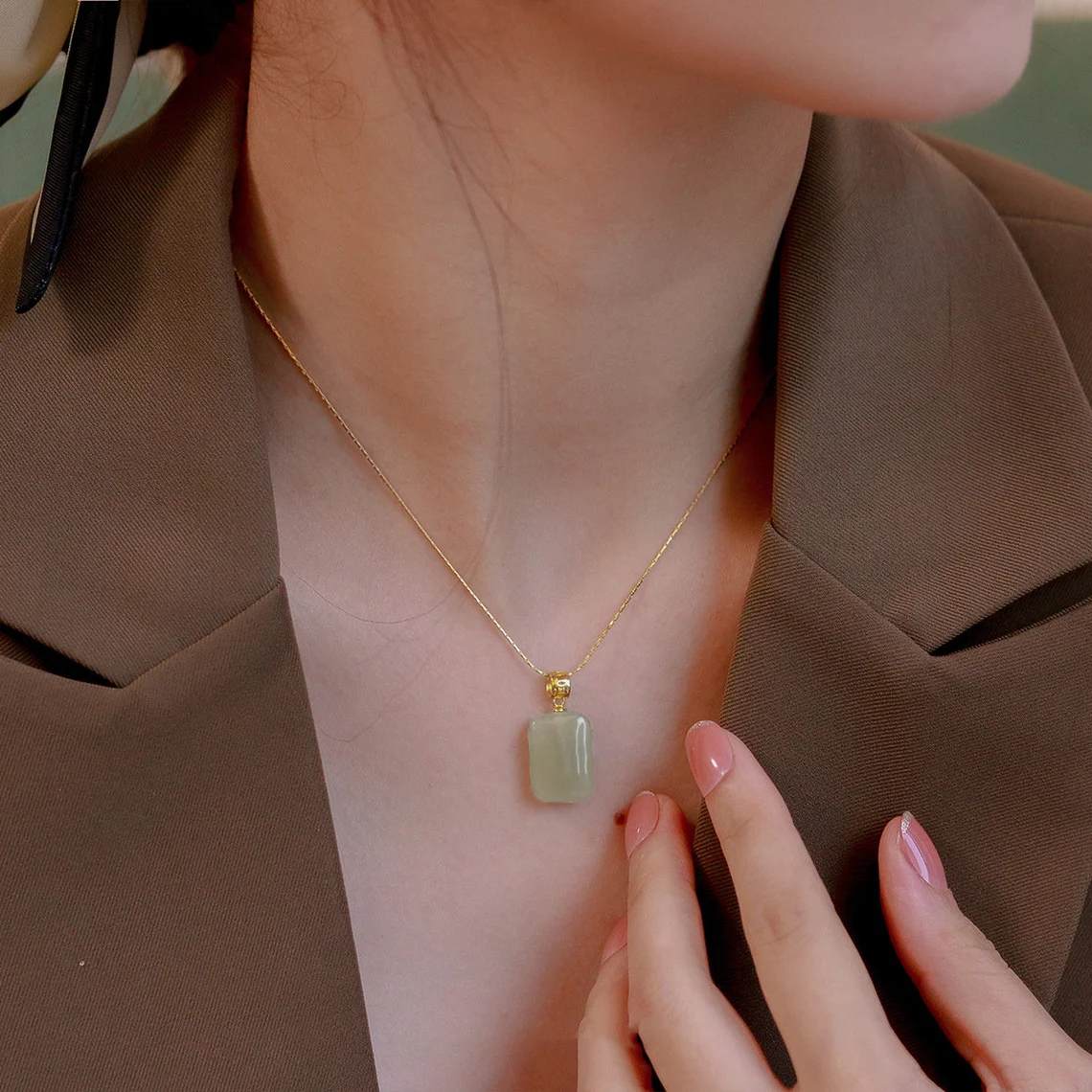
The beautiful word jade comes from the Spanish piedra de la ijada meaning the ‘the stone of the colic’ because the ancient Mayans and Aztecs believed that jade could cure pain in the sides of the body. Throughout history, jade has had a very special place in Chinese culture and is called ‘yu’ meaning ‘royal gem’.
What we refer to as jade is actually two separate gemstones. These two gemstones are jadeite and nephrite, which up until the mid-1800s was considered to be the same stone. Today, although both stones are still considered to be jade, they are recognized as having distinct properties and uses.
From the two, jadeite is rarer, more expensive and found in a range of beautiful colors. Nephrite, on the other hand, is typically found in green, yellow and white, with some varieties being red. It has a waxier, oily appearance than jadeite.
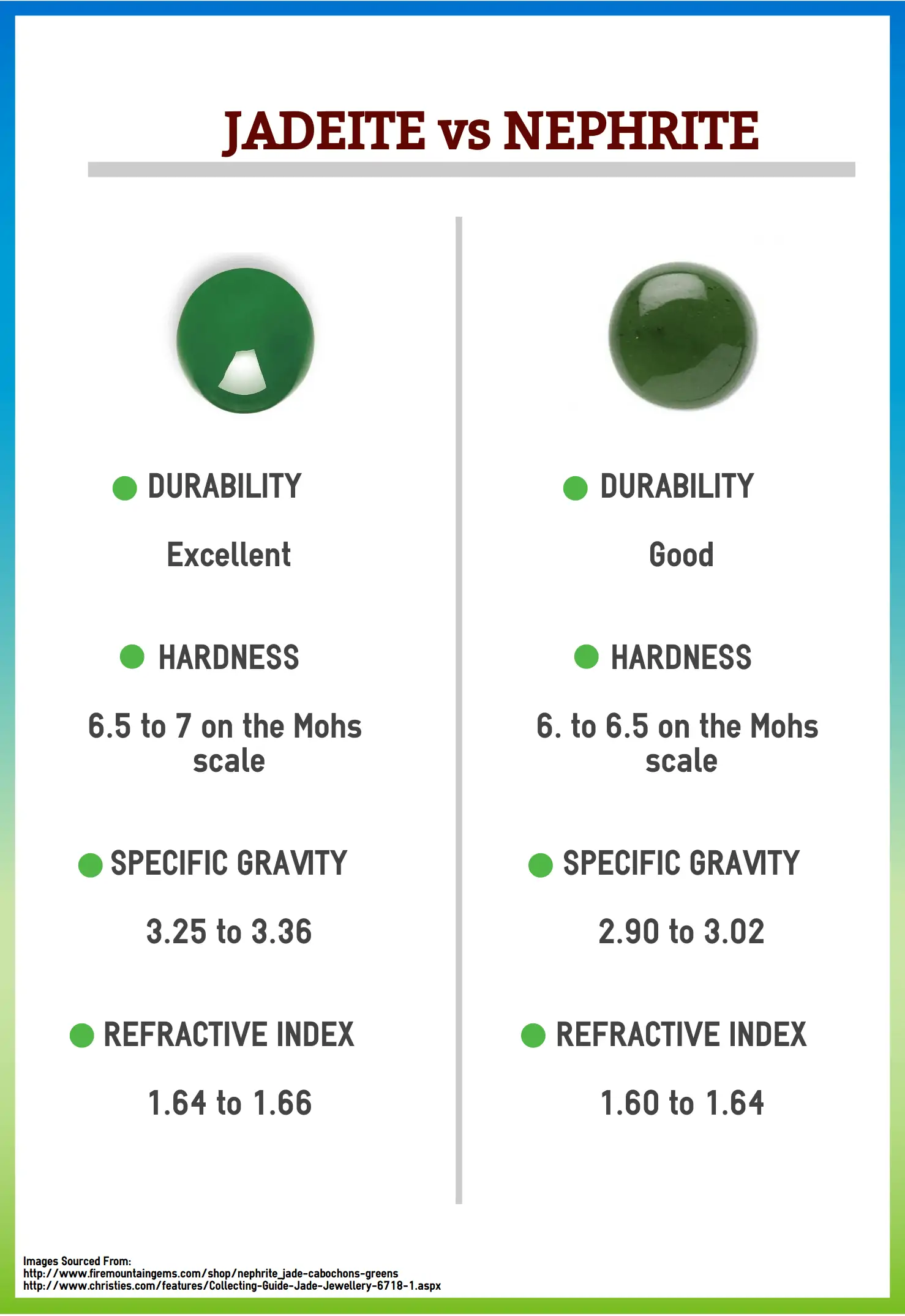
Nephrite is commonly found and therefore more affordable. However, nephrite is slightly tougher than jadeite as its structure is denser.
Jade is found in many regions around the world. While jadeite is found mainly in North America and Western Canada, nephrite can be commonly found in China, Russia and New Zealand.
How Do I Evaluate Jade?
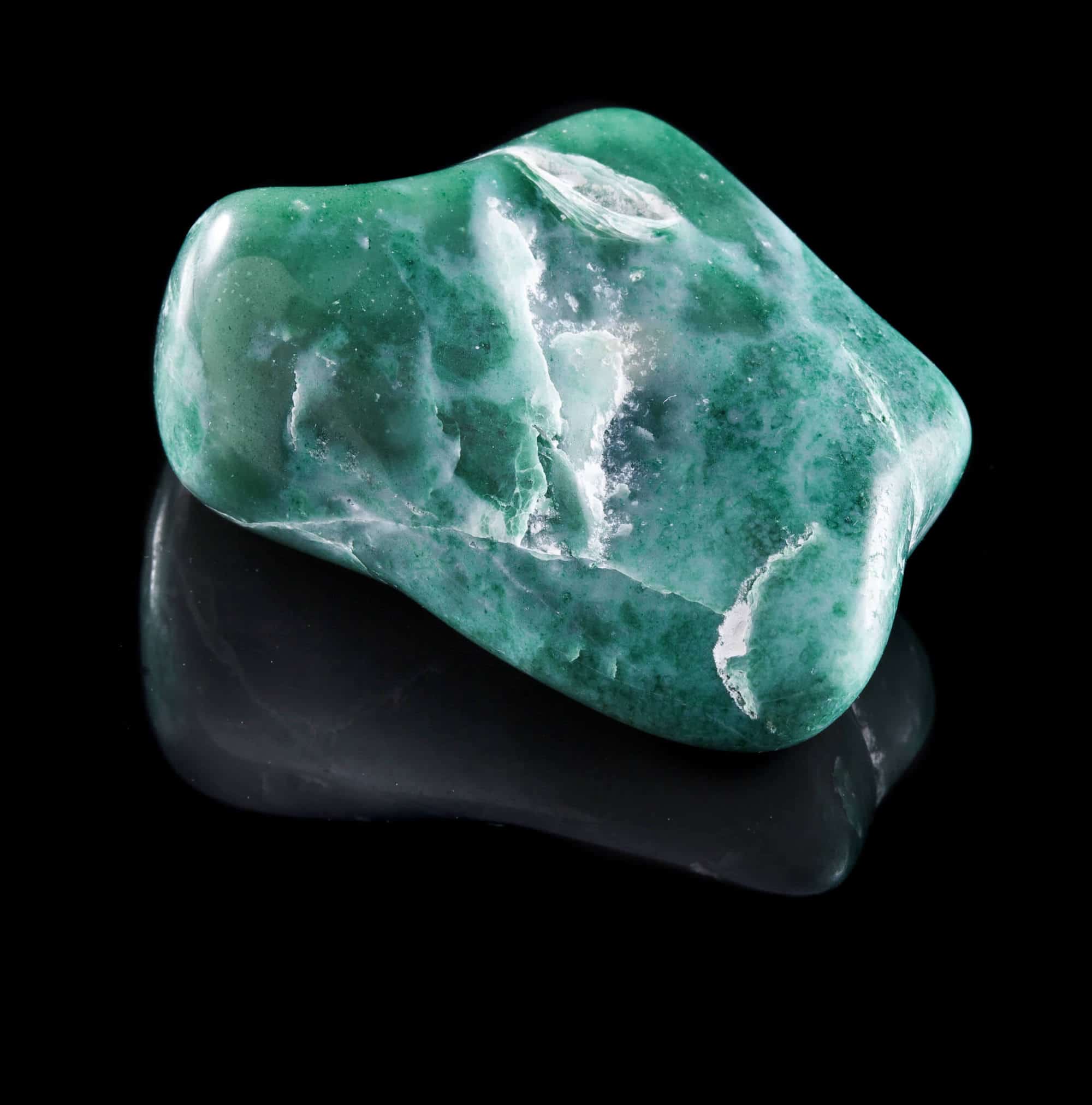
Not all jade is created equal and so it can be hard to find high quality jade on the market. The best jade is translucent, vibrant in color and smooth to the touch. When evaluating jade, the most important aspects to consider are color, transparency and texture.
1. Evaluating the Color of Jade.
Color is the most important quality and value indicator of jade. Although the word jade is almost synonymous with the word green, in actuality jade occurs in a range of rainbow colors as well as black and white.
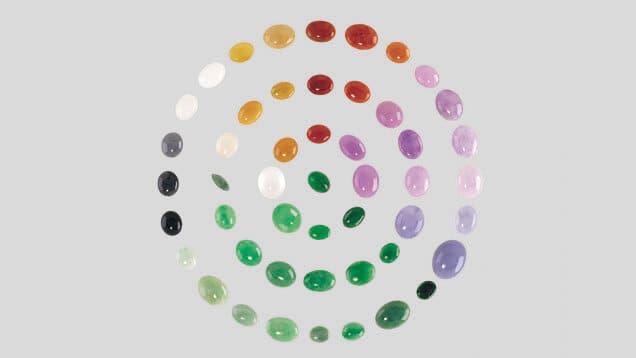
Needless to say, the most valuable and coveted jade is a specific shade of green, also called imperial jade. This is one of the most expensive gemstones and is highly sought after. Some other valued green jade shades are kingfisher jade, apple jade and moss-in-snow jade.
After green, lavender jade is the second most valuable, with black, orange and red jade also being popular.
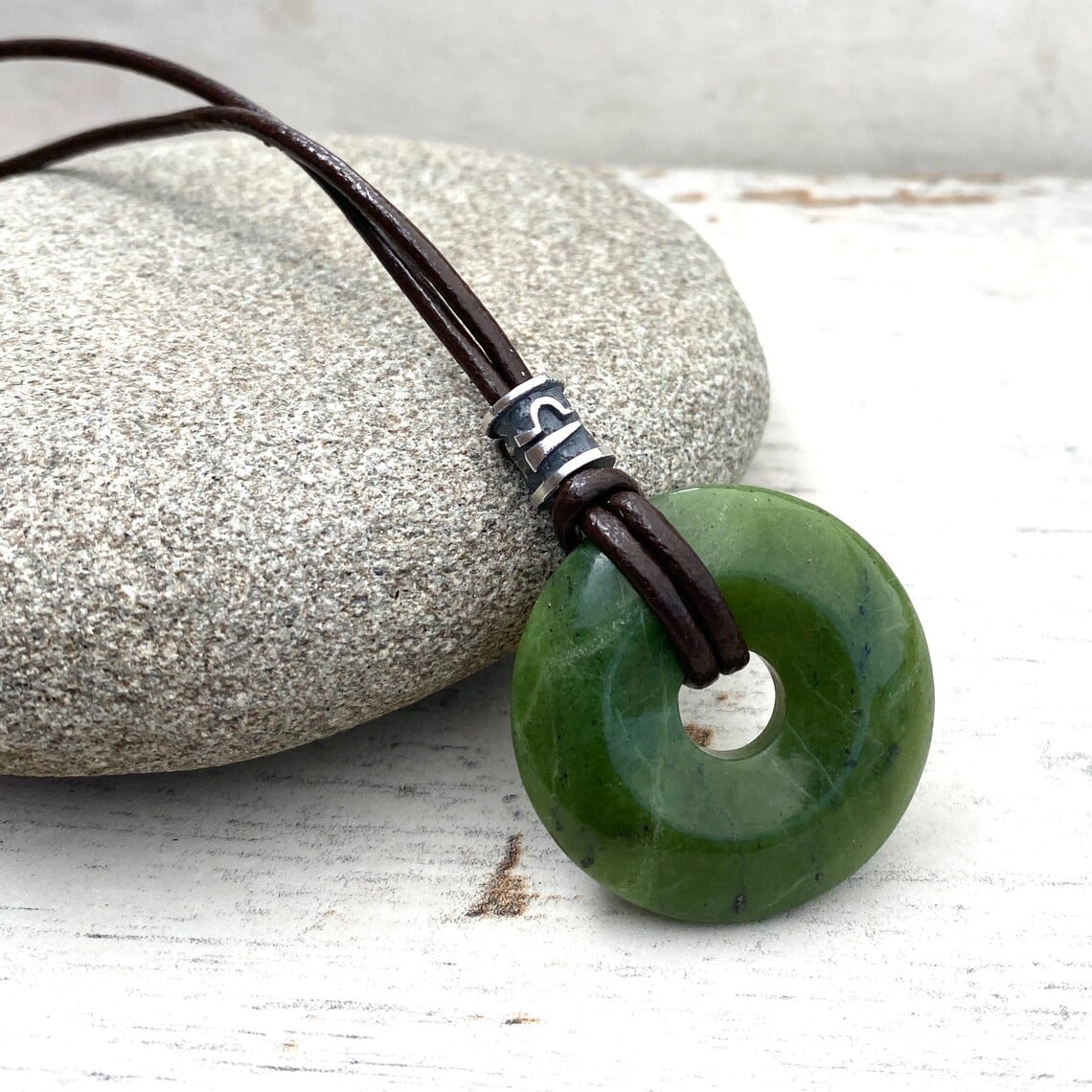
When choosing your jade, look for strong vivid colors. The color of the jade should be vibrant and lively. You should also ensure that you view the stone under artificial and natural light.
2. Evaluating Jade Transparency.
Jade is found in opaque to semi-transparent varieties. This is what gives jade its special look and distinguishes it from other green gemstones.
The most valuable type of jade is semi-transparent, giving it a slightly blurry look. When light reaches into such jade, it goes deep within the stone giving it a glowing appearance.
Completely opaque jade is not desirable, and neither is completely transparent. Jade with patchy transparency, where some parts of the stone are cloudy, is also not very desirable.
3. Evaluating Jade Clarity and Texture.
Jadeite is smooth and soft to the touch. What contributes to its texture is the size and hardness of its crystals that make the stone. Jade is composed of minute crystals that interlock densely as the stone forms.
Jade can be found with three main crystal sizes – fine, medium and coarse. The best texture is fine-grained jade. These stones have a smooth feel and very high luster.
4. Choosing Jade Cut.
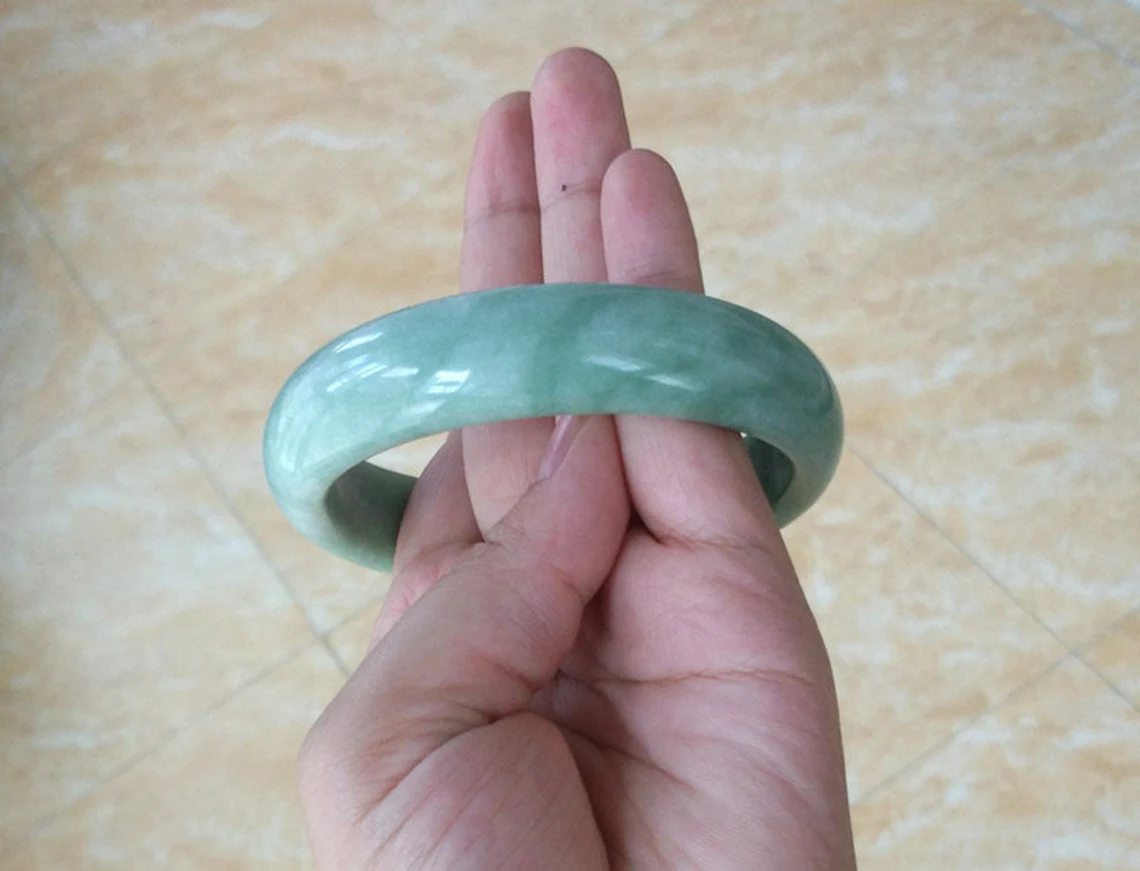
Jade is a versatile stone that can be cut and carved into all shapes and forms. Because of its fine-grained crystal structure it’s easy to cut and does not break, crack or chip while cutting.
The best quality jade is usually cut into cabochons and used in jewelry. These cabochons are often not calibrated in order to make the most of the jade rough and gain the highest yield.
Sometimes a single piece of jade rough is used to create an entire piece of jewelry. These are called hololiths and include bangles and rings. Jade hololith jewelry is often very costly because a lot of wastage of the rough occurs during the cutting process.
Jade is often used for ornamental carvings. The Chinese also have various popular cuts and designs for jade that hold special meaning for them.
5. Choosing Jade Size and Weight
Because jade is a very dense gemstone, it is much heavier than most other stones. A jade stone of the same size as a diamond, for example, would be much heavier than the diamond. This is why jade (and most other colored gemstones) is measured in millimetres and not in carats.
Jade can be found in all sizes, although high quality jade is rare.
Jade Price and Value
The price of jade has increased exponentially over the past several years. Experts attribute this giant hike in price to the economic boom in China over the past decade. With this prosperity, the demand for jade has exceeded the supply, causing prices to sky rocket. In some cases, the value of jade has surpassed that of gold.
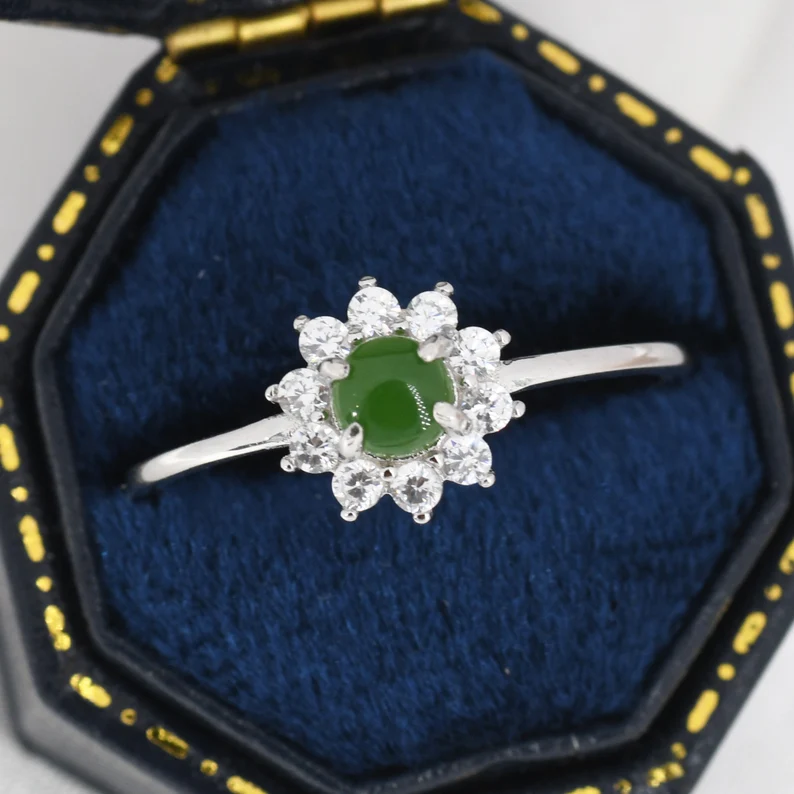
With that being said, the price of jade depends on its quality. Jadeite is more expensive while nephrite is a more affordable choice.
When choosing the highest quality jade, a small increase in size can raise the price of the stone dramatically. However, this is not the case with nephrite.
Often, the price of jade can increase around the time of Chinese New Year and other similar Chinese festivals. It’s a good idea to avoid buying jade during these times of the year if you have a low budget.
How Durable Is Jade?
Jade is an incredibly tough stone, and this is one reason it has been so highly valued. It’s generally able to withstand damage and does not break easily.
In fact, in the jewelry industry, there’s a saying that if you hit a piece of jade with a hammer, it will ring like a bell! As we mentioned above, the interlocking pattern of the tiny grains as the stone forms is what gives it its outstanding toughness.
While it only ranks at 6 to 7 on the Mohs scale, jade is quite scratch resistant and high-quality jade is excellent in jewelry for daily wear.
Are There Jade Enhancements or Treatments?
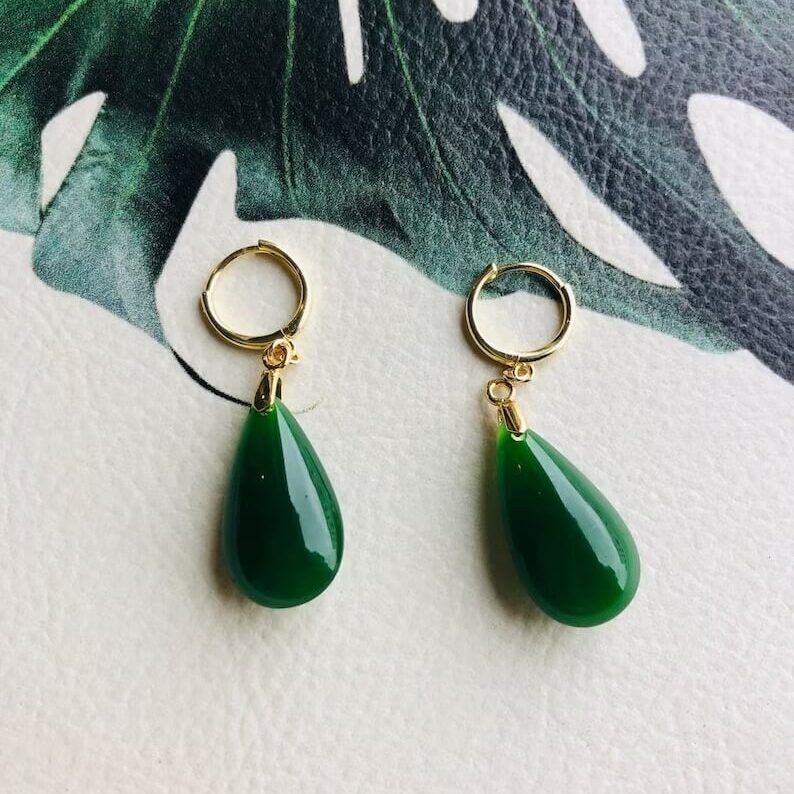
Most jade on the market undergoes many treatments to enhance its color. This can affect the stability of the stone and reduce its toughness.
When choosing jade, there are three grades to consider:
- Type A – This type of jade is natural and has had no artificial treatments. However, its luster may be enhanced by giving it a waxy coat. This does not affect the stone in anyway. Type A jade is dyed or fracture-filled and exhibits its real color.
- Type B – This refers to jade that may have been bleached to remove pigmentation and coated or filled. When jade is bleached, it becomes porous and easier to break. To combat that, polymer fillers are used to improve the jade’s stability. However, treatments can cause the stone to be unstable and reduces its toughness. Even so, Type B jade still has its natural, true color.
- Type C – This refers to jade that has undergone many treatments such as bleaching, fracture filling and dying. Over time, the color of Type C jade can fade exposure to heat and the stone is often not stable.
When buying jade, ensure that your jeweler discloses this information to you. Needless to say, Type A jade is the most expensive and also the most durable. It’s perfect for engagement rings and other high ticket pieces of jewelry.
Are There Jade Imitations on the Market?
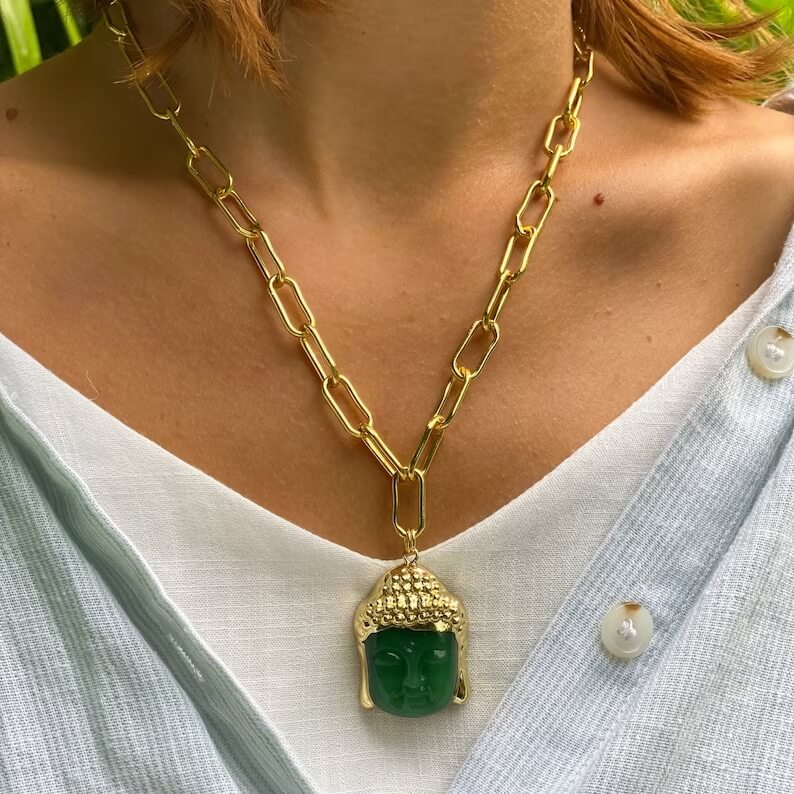
Due to jade being a highly coveted, rare, and expensive gemstone, there are many imitations on the market. It is important to be able to tell if your jade is genuine or fake. The best way to do this is to have a certified expert check the stone for you.
However, there are some tests that you can do to check if your stone is authentic:
- The Scratch Test: Scratch the stone with your fingernail. Check if it leaves a mark. You can take this a step further and use a sharp object such as the end of a pair of scissors or a nail. Gently scratch the jade and look to see if there is a scratch. If yes, it is likely that it isn’t genuine jade. When doing this test, ensure that you scratch a part of the stone that isn’t generally visible. Be careful when doing this test as you may damage your jade.
- The Temperature Test: Real jade does not heat up quickly. Hold your stone in your hand and see if it quickly warms up. It should feel cold, heavy and smooth in your hand.
- Density Check: Both jadeite and nephrite have high density levels, meaning that jade is heavier than most other stones. One way to check density is by throwing the stone up into the air and catching it. Feel its weight. Does it feel heavier than another stone of similar size? If it is suspiciously light, it is likely that the stone is not genuine.
Jade in Jewelry
Jade is can be used to create unique designs that can be quite impossible to do with other types of gemstones. The vivid color of jade is full of vitality and bursting with personality. It energizes any wardrobe and ads a pop of color to neutrals.
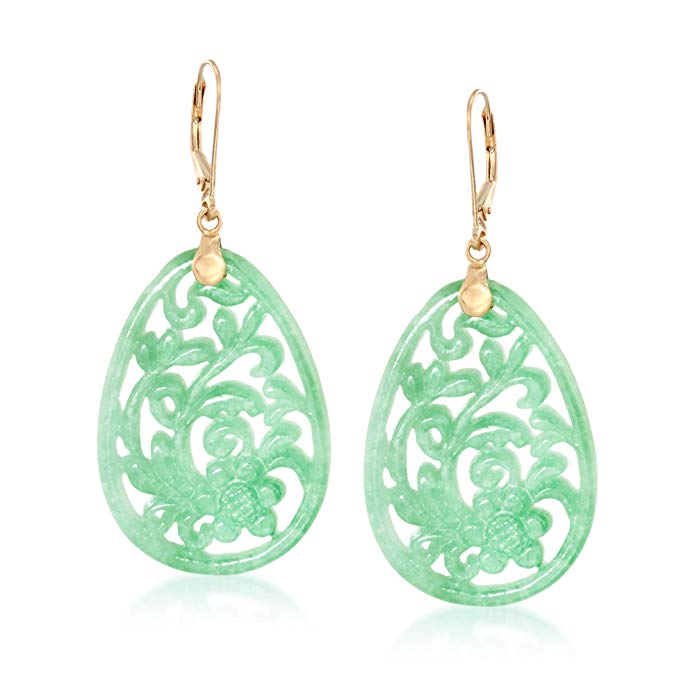
Small stud earrings, dainty pendants and tasteful rings can be the perfect addition to any outfit for casual or workwear.
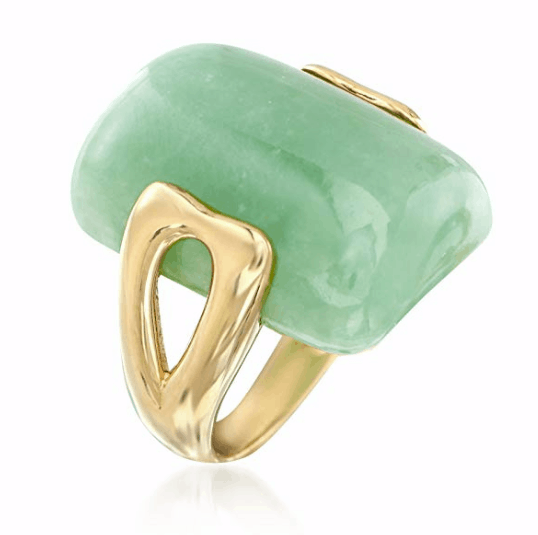
For a more dressed up look, jade cocktail rings, stylish earrings and statement pendants can be stunning and eye catching. The secret is to coordinate the color with your outfit for the best look.
Should I Buy a Jade Engagement Ring?
If want a non-traditional engagement ring, jade can be a good gemstone choice for you. A jade engagement ring has a classic, vintage look. The vibrant green color and the lustrous oily polish of this tone is unique and eye-catching.
Jade looks beautiful mounted in any colored setting. Setting the jade in silver or white gold settings gives the piece a modern look. Pair with diamonds for the perfect balance in brilliance and color. The contrast of the green against the white creates a stunning and edgy look.
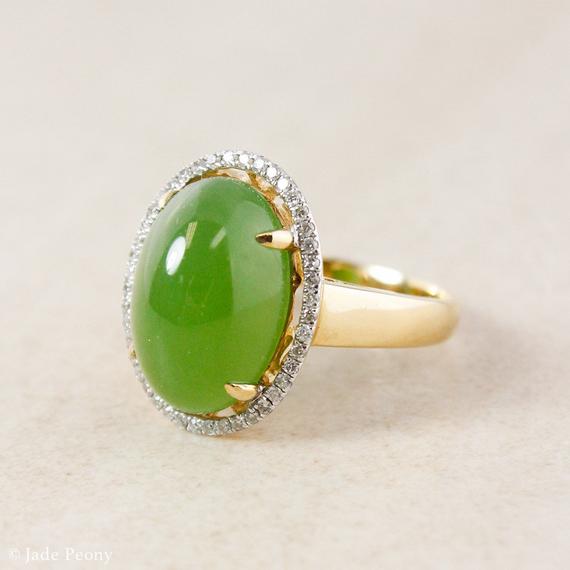
For a more classic appearance choose a setting made of rose or yellow gold. The color theory behind this is that green and yellow create an analogous color combination, forming a relaxing and immediately likeable impression.
However, it is important to choose your jade carefully. Select a Type A stone as that is the most durable and stable. This will be resistant to the inevitable damage that comes with daily wear and will last you a long time.
While jade is a durable stone, note that it isn’t as ideally suited for rough exposure as harder gemstones such as diamonds, sapphires and rubies. There is always the chance that the jade ring will be damaged. In general, it’s best to stick with harder gemstones for engagement rings.
Taking Care of Jade
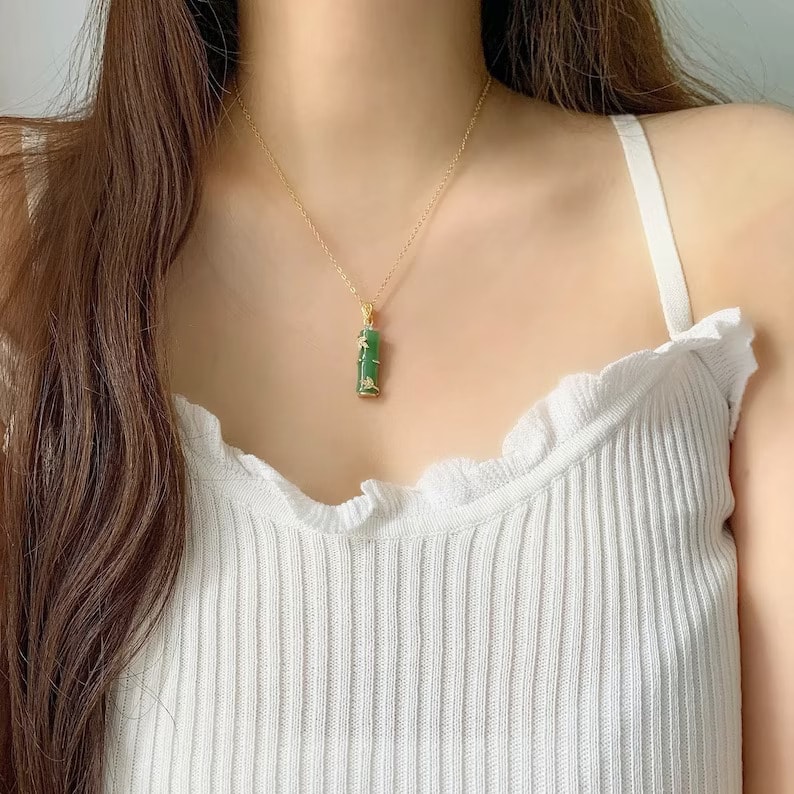
Taking care of jade is essential to maintain its beauty and durability over time. Here are some tips you can follow:
- Gentle Handling: Despite jade’s toughness, handle it with care to maintain its beauty. Avoid dropping it on hard surfaces to prevent chipping or scratching.
- Cleaning: Use a mix of lukewarm water and mild soap. Clean gently with a soft cloth or brush. Avoid harsh chemicals and ultrasonic cleaners; they can damage or discolor jade.
- Storage: Opt for soft pouches or lined boxes. Store individual jade jewelry pieces separately to protect against scratches from other items.
- Wearing Jade: Wear jade after applying cosmetics, perfumes, or sprays. Remove jade jewelry first to reduce exposure to potentially damaging substances. Limit exposure to direct sunlight and extreme temperatures to preserve color. Minimize contact with water, especially for extended periods, to protect settings and cords.
- Impact: Jade is sensitive to hard knocks, especially along its grainy structure. Avoid situations where jade might be knocked against hard surfaces.
- Repairs: If damaged, consult a professional jeweler experienced in jade repairs.
- Natural Color Preservation: Refrain from dyeing or bleaching; such actions can devalue the gem and reduce its natural beauty.
- Professional Inspection: Consider an annual check-up, especially for high-value or regularly worn pieces, to ensure longevity and maintain its pristine condition.
The Symbolism and Meanings of Jade
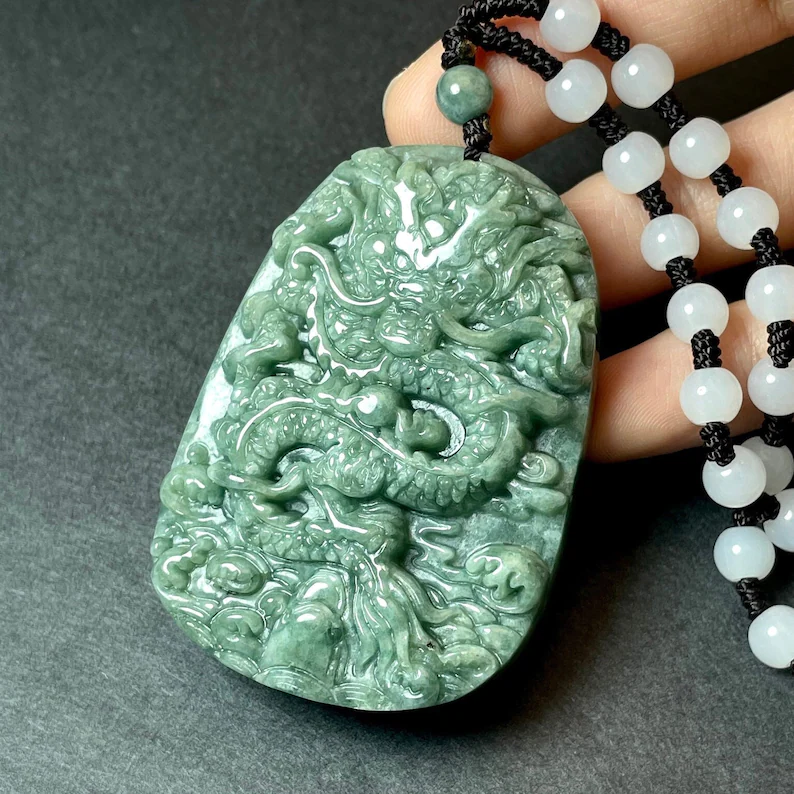
Jade has been valued by civilizations around the globe since ancient times. The ancient Mayans and Aztecs believed that jade could alleviate pain, especially in the side of the body.
In China, jade is believed to be a symbol of prosperity, wealth, purity and beauty. The Chinese also believe that jade possesses healing qualities and can protect the wearer from illnesses by absorbing any negative energy.
Jade symbolizes love, healing and courage. It is believed to enhance wisdom and promote balance. Jade is also believed to foster peace and harmony.
Where and How Can I Buy Jade?
When buying jade, here are some tips to keep in mind:
- Purchase from a licensed vendor, especially if buying an expensive item.
- Ensure that you know whether the stone is nephrite or jadeite, and what treatments and enhancements it has undergone, if any.
- If you’re buying an expensive piece of jadeite, request a certificate of authenticity. This should disclose the authenticity of the stone and the identified grade.
We recommend checking out:
- James Allen: James Allen is renowned for its extensive collection of diamonds and gemstones. Although it’s more popular for diamond engagement rings, you might be able to find some jade pieces among its gemstone selections.
- Blue Nile: Blue Nile is another major player in the online jewelry industry, especially known for its diamonds. It offers a variety of gemstone jewelry, so you can explore their collection to see if they have jade offerings.
- Etsy: Etsy stands out as a hub for artisans from all over the world, showcasing their creativity and craftsmanship. Here, you can discover both artisanal and vintage jade pieces, with a wide range of designs and styles. It’s the perfect platform if you’re looking for something unique or with a touch of history.
- Amazon: Amazon, the e-commerce giant, has a vast jewelry section. Among the myriad of offerings, you can find both artisanal and vintage jade pieces. The diversity of sellers ensures you have a plethora of choices, from handmade items to antiques.
Wrapping Up
Jade’s mystique is more than just its enchanting beauty. For centuries, this gemstone has been revered for its cultural significance, healing properties, and connection to nature. Beyond its lustrous appearance, jade carries with it a rich tapestry of stories and traditions. As you wear or utilize jade in your life, you’re not just donning a gemstone, but embracing a piece of ancient history and spiritual resonance.


